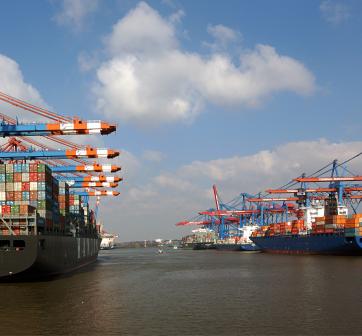
The following are some methods to control costs in service transportation in Australia:
Selection of transportation mode
Select the mode based on the characteristics of the goods: For goods with large volume, heavy weight and low time requirements, sea transportation is preferred as its unit transportation cost is relatively low. Such as building materials, large-scale mechanical equipment, etc. For small-sized, high-value and time-sensitive goods such as electronic products and valuable medicines, air transportation can be considered. Although the freight cost is high, it can reduce inventory costs and the time spent on capital occupation, and the overall cost may be more favorable.
Multimodal transport: It combines various modes of transportation such as railways, highways and sea transportation to leverage their respective advantages. For instance, goods are first transported by railway from inland areas to ports, then by sea to destinations in Australia, and finally delivered by road to the final receiving points. This way, costs can be reduced while ensuring transportation efficiency.
Transportation route planning
Optimize the origin and destination: Try to choose ports or airports that are close to the place of origin and sales of the goods as the origin and destination to reduce the cost of domestic transportation. At the same time, consider the charging standards and service quality of different ports or airports, and choose a location with high cost performance.
Considering the characteristics of the shipping route: For sea transportation, choosing a direct shipping route can reduce transfer costs and time, but it is necessary to compare the differences in freight rates between direct and transfer routes. For air transportation, pay attention to the airline's route network and flight frequency, and choose flights with fewer direct or transfer times to reduce transportation time and costs.
Goods packaging and handling
Appropriate packaging: Choose lightweight, sturdy and transportation-compliant packaging materials to protect the goods while reducing their weight and volume, thereby lowering freight costs. For instance, lightweight and high-strength materials such as honeycomb cardboard can be used to replace traditional wood packaging. Meanwhile, optimize the packaging design to make full use of the space in the transport container for the goods and increase the loading rate.
Efficient loading and unloading: Work with a professional loading and unloading team to ensure that goods are loaded and unloaded quickly and safely, reduce the time spent at ports or airports, and avoid additional storage costs and delay expenses.
Cooperate with the transportation company
Select the right company: Through methods such as bidding and inquiry, compare the quotations and service quality of different transportation companies, and choose a company with good reputation and reasonable prices to cooperate with. Long-term cooperation can also lead to more favorable freight rates and service terms.
Sign a favorable contract: Clearly define the transportation price, service content, responsibility division, freight adjustment mechanism and other terms in the contract to avoid disputes and additional costs in the future. At the same time, strive for certain freight discounts or preferential conditions, such as offering stepped discounts based on the transportation volume.
Transportation time selection
Avoid peak seasons: Understand the off-peak and peak season patterns of the Australian transportation market and try to avoid transporting during peak seasons. During peak seasons, transportation demand is high and freight rates will rise, such as in the sea and air freight markets in the West before Christmas every year. Lower freight rates can be enjoyed during the off-season.
Flexible arrangement: For non-urgent goods, the transportation time can be flexibly adjusted based on the transportation company's capacity and fluctuations in freight rates, and goods can be dispatched when capacity is abundant and freight rates are relatively low.
Information-based management
Cargo tracking system: By adopting an advanced cargo tracking system, the real-time status of cargo transportation can be grasped, problems during transportation can be promptly identified and resolved, and delays and increased costs caused by poor information flow can be avoided.
Data analysis: By analyzing transportation data such as transportation costs, cargo flow, and transportation time, the key points and optimization space for cost control are identified, providing a basis for decision-making, such as adjusting transportation routes or choosing more suitable transportation companies based on data analysis.

